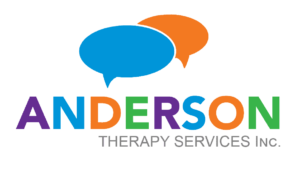What is Apraxia of Speech?
Apraxia of Speech, or AOS, is a specific motor speech disorder which prevents a person from being able to produce speech correctly. Although children may experience childhood apraxia of speech (CAS), adult apraxia is often associated with a neurological event such as a stroke, traumatic brain injury, tumor, or dementia. People with apraxia know what they want to say, but their brain has difficulty sending the message to the speech muscles, causing sounds to come out incorrectly.
Apraxia of Speech Symptoms
Apraxia of speech ranges from mild to severe, with the most severe cases preventing some people from the ability to produce speech sounds at all. The severity of an individual’s AOS will depend on the area/amount of damage in the brain. Although every person with AOS may be different, some common signs and symptoms of AOS include:
- Inconsistent speech errors
- Slow rate of speech
- Articulatory “groping” (e.g., Despite multiple attempts to place the tongue and lips in the right place to produce certain sounds, the patient has difficulty coordinating the speech muscles)
- Difficulty with sounds of increased length and complexity (e.g. single syllable words are easier to produce than multisyllabic words)
- Difficulty with prosody and intonation, which allow our speech to have rhythm and pitch (people with AOS often present with speech that is monotone)
- More difficulty with spontaneous responses versus automatic speech (people with AOS are often able to produce automatic speech such as social greetings, singing the alphabet, and counting)
- Decreased speech intelligibility (people with AOS often have speech that is more difficult to understand)
Assessing Apraxia of Speech
In regards to the assessment of apraxia of speech in both adults and children, a Speech-Language Pathologist (SLP) may diagnose AOS by taking a variety of factors into consideration such as identifying the speech sounds that the client can/cannot produce, as well as taking a look at the structure of the client’s mouth. Speech therapy has been proven to be extremely beneficial for many people who are suffering from AOS.
Treatment often requires intense 1 on 1 therapy with an SLP or CDA as well as client motivation and a strong family support system. During therapy treatment, the therapist will work on retraining an individual’s speech muscles to initiate speech through a variety of exercises. For some individuals, a speech-language professional may recommend an alternative/augmentative communication device for the client, such as a communication board or digital device to supplement verbal communication skills.
Learn More About Speech Therapy for Apraxia of Speech
If you are interested in learning more about childhood or adult apraxia of speech, please contact us to speak with one of our speech-language professionals today. Our team of Speech-Language Pathologists and Communicative Disorders Assistants would love to assist you with any questions or concerns that you may have regarding your own, or your child’s speech and language development.






